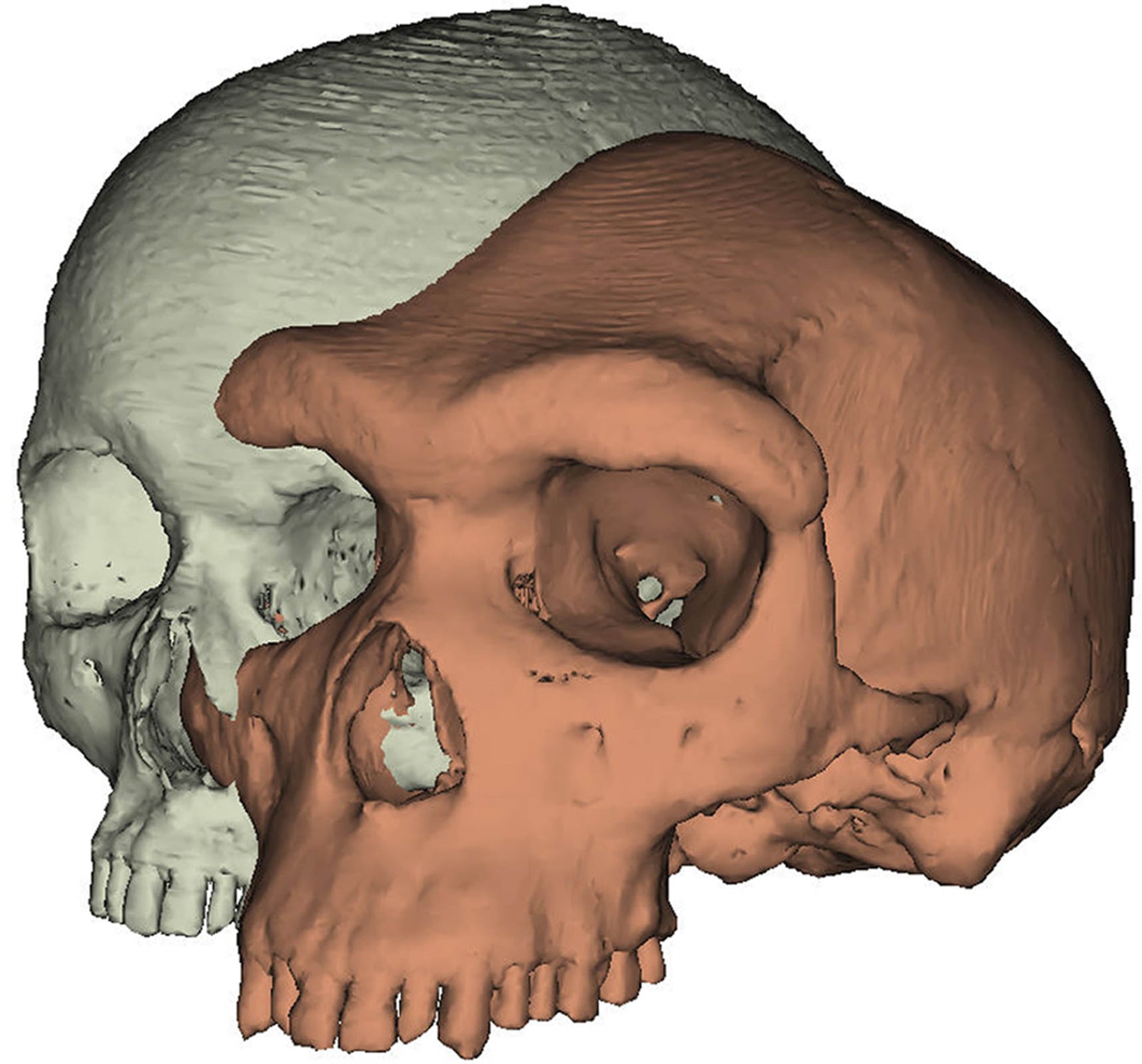Modern humans might never have raised a quizzical eyebrow had Homo sapiens not lost the thick, bony brows of its ancient ancestors in favour of smoother facial features, a new study suggests.
Researchers at the University of York believe early humans bore prominent brow ridges as a mark of physical dominance, and as the human face evolved to become smaller and flatter, it became a canvas on which the eyebrows could portray a much richer range of emotions. The team stress their conclusions are speculative, but if they are right, the evolution of smaller, flatter faces may have unleashed the social power of the eyebrow, allowing humans to communicate at a distance in more complex and nuanced ways.
We traded dominance or aggression for a wider palette of expression. As the face became smaller and the forehead flattened, the muscles in the face could move the eyebrows up and down and we could express all these subtler feelings. We moved from a position where we wanted to compete, where looking more intimidating was an advantage, to one where it was better to get on with people, to recognize each other from afar with an eyebrow flash, and to sympathize and so on..
The scientists set out to investigate why ancient humans had such prominent brow ridges in the first place. Over the years, researchers have put forward a range of hypotheses. One idea states that the ridge simply filled the gap that would otherwise exist between the protruding face and the braincase. Another argues that a prominent brow served as structural reinforcement, ensuring the face could take the stress of powerful chewing.
 |
| A computer generated model of a modern skull next to the heavy-browed skull of ancient hominin Kabwe 1 |
Using computer models, the scientists performed a series of experiments on the virtual skull. First, they looked at how much brow bone was needed if its purpose was to plug the gap between the face and the braincase. Next, the researchers looked at how the stress of chewing spread over the face with and without the brow ridge. They all seemed to make little difference. What was left was the plausibility of a social explanation.
It is unclear what factors led the human face to become smaller over time and lose its thick brow ridges, but a flatter face may have paved the way for richer human communication and with that the greater collaboration that emerged with the rise of Homo sapiens. In Homo heidelbergensis and other ancestors, the thick brow signified physical strength at the apparent expense of eyebrow gymnastics: in those early humans, the muscles that moved the eyebrows simply pulled them back and forth over their brows.
While one evolutionary psychologist wonders why other primates do not use them more... given the importance of eyebrows in human communication. It is plausible to suggest that it has something to do with increased need for more complex communication in the larger social groups that evolved late during the course of human evolution.
Sources -

No comments:
Post a Comment